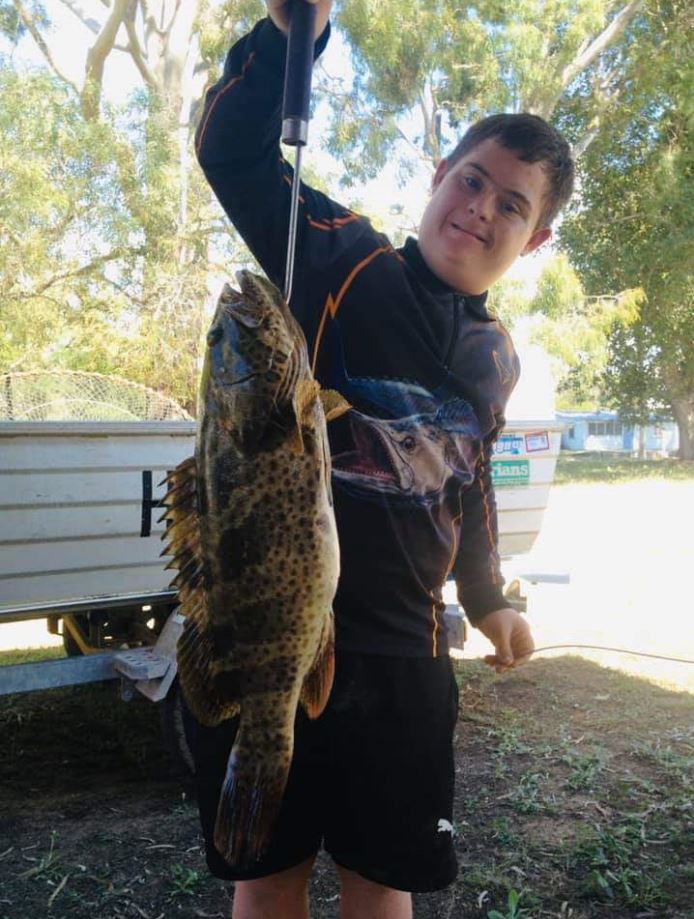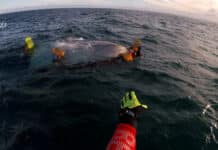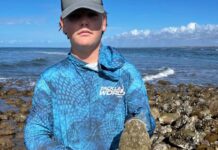
For those fishing the Burnett River who want to spend the day out, put in the pots first as there have been reports of good-sized chocolate bucks coming in.
With the weather starting to cool down, the mangrove jacks will start to slow, but if you want to keep chasing them and are using lures, get into the shallows or rocky areas where the water is warmer.
When bait fishing, try using live bait such as sprat or prawns.
There have been good reports of a few good-sized grunter being caught with a lot of little ones in between in the Burnett River.
Keep persevering until that big one comes along.
With the cooler weather upon us, it’s time to get the bream gear out as the bigger fish will eventually start moving through the river system to spawn.
There are plenty of baits to use when fishing for this species, such as mullet, prawns, sprat, mullet gut, chook gut and chicken breast to name a few.
When chasing bream, it’s a good idea to bring the fish to you and have a light berley mist in the water.
With the big flathead coming into the river to spawn, now is the time to get out and flick a lure around.
For those who haven’t used a lure before and want to give it a go, flathead would be one of the easiest fish to learn on and catch.
The gear you need to get is a graphite rod around the 2to 4kg or 3 to 6kg, a 1000 or 2500 size reel, spooled with 6lb to 10lb braid and 8lb to 16lb leader on the end for abrasion resistance against rub-offs.
The type of lure to use can range from different lengths and colours.
One of my favourites would be a 4” Curl Tail Grub in the Bloodworm colour.
The techniques to use for catching flathead is the basic “hop and drop”.
The best tide to target flathead in my opinion is the run-out tide as the flathead will move into positions to ambush bait as it is coming off the shallow flats or creek mouths.
It’s up to the angler to find these areas by drifting around to find any good drop-off that goes into the deeper water.

When casting your lure, make sure you have a heavy enough jig head on your plastic to get you to the bottom because that’s where the flathead live.
You do not want to go too heavy as this will make your lure look very unnatural.
The size to use will range from 1/4oz to 1/2 oz jig heads, depending on depth of water and the run in the current at the time.
When casting your lure, cast as far as you can up-current, hopefully with the wind at your back.
When the lure hits the water let it sink to the bottom.
You will know it’s on the bottom when your braid goes slack and relaxes.
Then start your retrieve by giving the rod tip two sharp flicks upwards and then allow it to fall to the bottom again.
When sinking your lure back to the bottom it is important to keep in contact with your lure as this is when the fish will come from underneath and take the lure, thinking it’s a dying baitfish or prawn.
It is up to you to make it look that way.
Once you hook that first fish your confidence will grow and then you can find new areas to put this technique into practice.
The important thing is to keep on casting.
Depending on where you live in Australia, you’re either not fishing or not fishing as much as you’d like.
So Jarvis Walker have put together an isolation activity pack to keep your fishing brain active!
The pack includes a bunch of word finder and crossword puzzles relevant to Aussie fishing.
These puzzles will test your knowledge and keep you dreaming about catching fish.
You can download and print the pack here.
We know it isn’t the same as hitting the water and catching real fish – but the puzzles may help to keep you and your family entertained at home.
Stay safe and keep on casting,
Shane Anderson, Tackle World Bundaberg
- Related stories: Get your tackle right for Bundy region fishing







